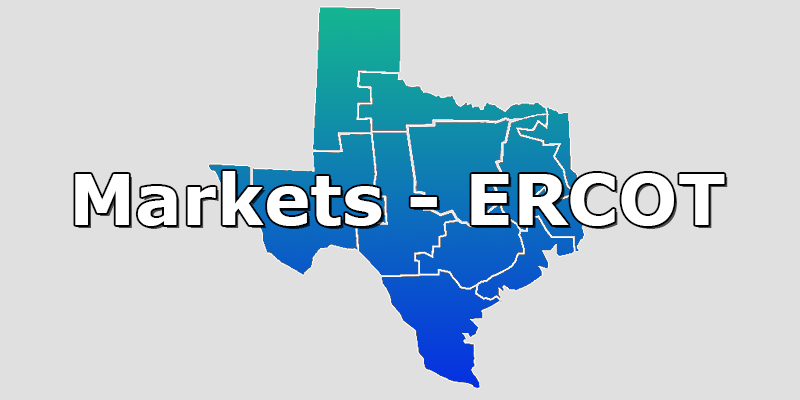.png?width=750&height=375&name=November%202022%20market%20letter%20(2).png)
On behalf of the team at 5, I am pleased to forward our November market letter. This letter discusses: (i) the upcoming Mid-Term Elections, and how the results could impact energy policy; and (ii) the challenges facing grid system operators in Texas, New England and New York as they work to integrate large volumes of intermittent resources into the grid mix.
The Mid-Term Elections
Recent polls favor Republicans to take control of the House and perhaps the Senate as well. As a result, several clients have asked what such a change in Washington could mean for energy policy. The question is particularly interesting because the landmark Inflation Reduction Act (IRA), which allocated some $369 billion to the energy sector, was passed by the Senate and the House without a single Republican vote.
The Inflation Reduction Act: The short answer is that the election results will probably have little effect on energy policy. While a change in control of the House or the shift of a single Senate seat would have doomed passage of this legislation, since it was passed and signed into law by President Biden, it will be difficult to repeal it. Even if the House and Senate pass legislation to repeal or amend portions of the IRA, President Biden has veto power, and overriding a veto requires a vote of two-thirds of the members in the House and Senate. This is good news for developers of renewable power, energy storage, electrical vehicle manufacturers and others that will benefit from the incentives found in the IRA. But this does not mean that the IRA and its various energy incentives are immune from challenges in the courts.
There are some interesting parallels between the IRA and the Affordable Care Act (ACA). Like the IRA, the Democrats used budget reconciliation to get the ACA approved by the Senate, and all Republicans in the House and Senate opposed the ACA. President Obama signed the ACA in March 2010, and in the November 2010 mid-term elections, the Democrats lost control of the House, in part, because of opposition to the ACA. The new congress did not reverse or upend the ACA, in part because politicians have little appetite for taking benefits away from voters. Yet the law became the subject of extensive legal challenges, one of which ended up in the Supreme Court.
While there is considerable opposition to the IRA, and it will undoubtedly face legal challenges, even though the law does not appear to be subject to the same serious constitutional challenges (for example, the constitutionality of the insurance mandate) that faced the ACA. In addition, as in the case of the ACA, we expect that in the two years remaining in the Biden Administration, a significant amount of the benefits will be granted to various energy projects. Once grants are made, it will be difficult if not impossible to reverse them.
Congressional Oversight: While the IRA may be safe from legal challenges, we expect that a Republican controlled house will use its oversight powers to review almost all aspects of the IRA and other programs that address climate change. This could certainly cause some delays in the implementation of the IRA’s programs and slow or halt other efforts to address climate change such as the SEC’s plan to require ESG reporting. For example, comments from Rep. Garland “Andy” Barr of Kentucky, a member of the House Financial Services Committee, indicated that ESG principles, “will be one of the major focuses of oversight of a Republican majority” adding that “My view is that ESG investing is a cancer within our capital markets,” Barr said. “It is a fraud on American investors.”
On the state level, we have already seen several states, pushing back against BlackRock and other investment firms that prioritize ESG principles. Texas has passed legislation that restricts the state’s retirement and investment funds from doing business with firms that “boycott” the oil and gas sector. Echoing this approach, Louisiana Treasurer John Schroder recently pulled $794 billion in pension fund money from BlackRock funds due to their use of ESG criteria in making investment decisions. “Your blatantly anti-fossil fuel policies would destroy Louisiana’s economy,” Schroder said. “In my opinion, your support of ESG investing is inconsistent with the best economic interests and values of Louisiana,” Schroder said.
Other than some minor changes to the approval process to FERC commissioners, we cannot think of other ways that a change in House or Senate leadership will impact federal energy policy – but as noted above, there is no shortage of ways in which the House and Senate can investigate the energy industry.
Looking past the mid-terms, if a Republican candidate is elected President in 2024, we might see an effort to pass legislation repealing the IRA. When President Donald Trump was elected in November 2016, Vice President Mike Pence stated, “President elect Donald Trump will prioritize repealing President Barack Obama’s landmark health care law right ‘out of the gate’ once he takes office.”
But as I expect will be the case with the IRA, once the energy community is offered the $369 billion in incentives, it will be very difficult for a future administration to repeal these benefits.
Permitting Reform: While repealing the IRA may be top of mind, the fate of Sen. Manchin’s effort to expedite permitting of critical energy infrastructure is equally important. In the run up to passage of the IRA, Senate Majority Leader Schumer agreed to support Manchin’s permitting bill (which included a requirement that Federal Agencies approve the controversial Mountain Valley Pipeline that Manchin supports) in exchange for Manchin’s support of the IRA. The bill seemed to be a good compromise, angering both Republicans who said it did not do enough for the fossil fuel industry and Democrats who said it did too much.
After the mid-term elections, it will be interesting to see if the Manchin bill can form the basis of bipartisan legislation that addresses the need to upgrade the nation’s energy infrastructure. As we note in the last section of this letter, there is a growing consensus among all participants that the grid envisioned by the energy transition does not yet exist. A recent Washington Post story is emblematic of the issue faced by new generation and transmission projects across the nation.
In this case, nearly ten years into the permitting process, a geo-thermal company had started construction of a plant that would provide carbon free energy to California residents. Late into this process, developers found out that: (i) the warm water drawn from the earth to power generation may threaten a rare toad, and (ii) the project’s location impinges on a sacred healing place for the Shoshone Tribe. The U.S. Fish and Wildlife Service has ordered the project stopped, while the Bureau of Land Management has pointed to the project as one of the ways the Biden administration is successfully confronting the climate crisis. This is just the kind of permitting delay that the Manchin bill was designed to address.
Intermittent Resources and The Energy Transition
Intermittent resources are generating assets that are not continuously available such as electricity that comes from wind farms and solar arrays. The growth of intermittent generation continues to challenge system operators who are responsible for ensuring a reliable supply of electricity. In the balance of this letter, we discuss ways in which intermittent supplies are challenging three markets, ERCOT, the New England ISO (NEISO) and New York ISO (NYISO).[1]
ERCOT: In ERCOT, the state in the country with the highest volume of wind and solar generation, we are clearly seeing the challenge that intermittent generation places on the system operators responsible for managing the reliability of the grid. As shown in Figure 1, on one day in Mid-October, wind resources generated approximately 18,000 MWs in the morning and only 1,200 MWs in the afternoon. The variation of solar output is equally dramatic. The chart below shows the combined hourly output of wind and solar over the last several weeks.
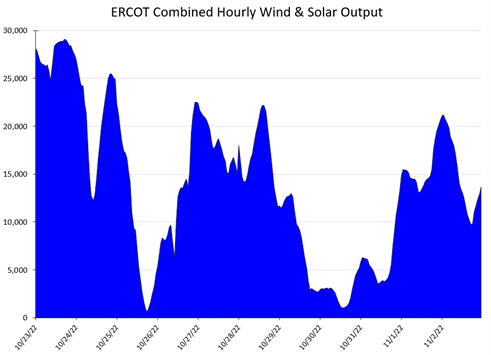
Figure 1: ERCOT solar and wind output data from ERCOT
A state of the market report issued by ERCOT’s independent market monitor in April also focused on the variability of these resources during different hours of the day and during different months of the year. As a result, the grid will need a significant number of resources that can quickly respond (turn on or turn off) to dramatic changes in intermittent output. Clients that can respond to the grid’s demand for a quick response to changes in load will be well paid for providing this critical resource.
Texas demonstrates the challenge once high volumes of intermittent generation are installed. In New England and New York, the independent system operators are dealing with this future risk as well as the challenge in getting such renewable generation installed in the first place.
New England: In late July, the New England ISO (NEISO) issued its “Future Grid Reliability Study”. The report is a sobering warning to the New England states that have enacted legislation to reduce carbon emissions. Among the many problems cited by the report, key take aways include:
- The need for a significant amount of natural gas fired generation or energy storage to address intermittent solar and wind resources
- High electrification and retirement of a modest amount of natural gas power plants will result in insufficient generation to meet the demand on the grid
- Assumptions may not be adequate if variable resources increase, and the grid transitions to one that is winter as opposed to summer peaking.
Aggressive decarbonization scenarios assume an unrealistic amount of new wind, solar and energy storage. New England currently has only 5,600 MWs of wind, solar and storage capacity. To meet an aggressive decarbonization plan, that number needs to increase to a staggering 89,000 MWs. If the sheer size of this additional generation is not scary enough, the report goes on to focus on the amount of land needed to install this volume of generation. A NEISO board member, Barney Rush, noted that “the amount of additional solar capacity envisioned in the ISO-New England Future Grid Study would require over 100,000 acres of land, just for solar, between now and 2040.”
This amount of new generation is a bit less if the technology allows for the installation of another 3,000 MWs of dispatchable units (see Figure 2). Qualifying intermittent resources include small nuclear plants or fossil fuel plants powered by synthetic or renewable fuel (e.g., green hydrogen) – none of which are commercially available.
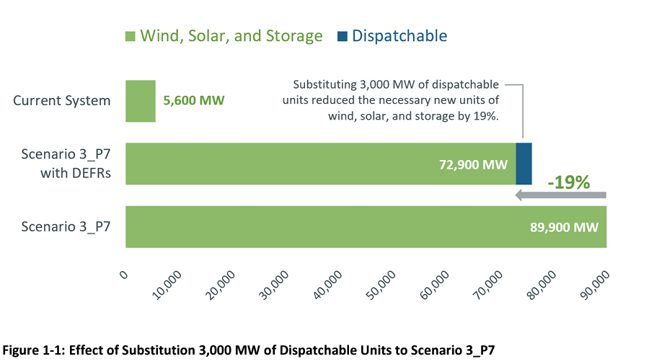
Figure 2:Effect of 3,000 MWs of dispatchable assets from NEISO
NYISO: In New York, the state’s Climate Leadership and Community Protection Act requires 70% renewable generation by 2030 and100% renewable generation by 2040. A September 22, 2022, report issued by the New York ISO (NYISO) echoes many of the same issues raised by the NEISO. The report highlights that almost all the new renewable generation will be upstate solar or offshore (downstate) wind.
The total addition is an almost 5x increase in intermittent resources – and without major transmission upgrades. These new renewable resources will cause a “23% increase in congestion statewide by 2030”.[2] Some of the areas that are expected to have higher amounts of congestion are shown in Figure 3, which was issued by the NYISO.
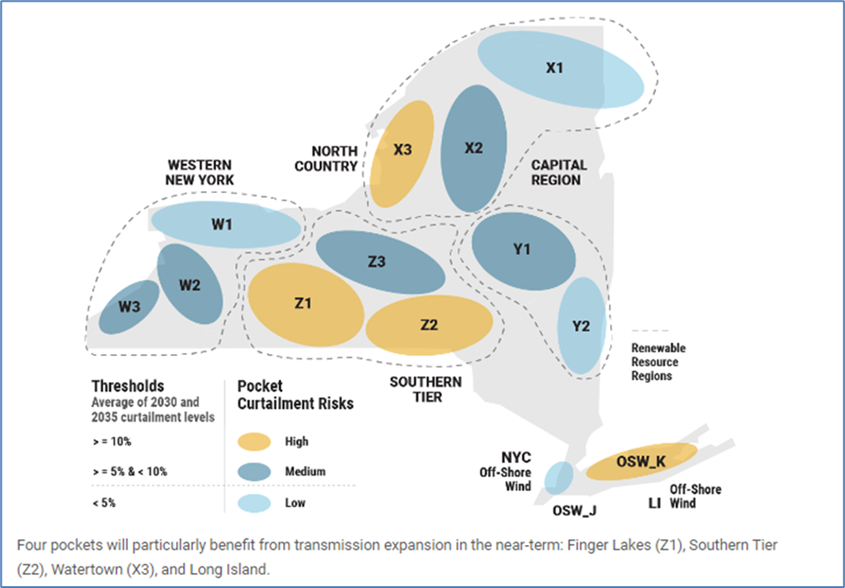
Figure 3: Congestion pockets in New York from NYISO
This report goes on to state that in just 7 years, “an estimated 20GW of additional renewable generation must be in-service to support the energy policy target of 70% renewable generation by 2030. For reference, 19GW of new generation has been developed since wholesale electricity markets began more than 20-years ago in 1999.”
The 2040 goals are even more unrealistic. The NYISO report calls for some 95 GWs of new capacity or generation by 2040. The need for dispatchable “carbon free” generation sited by NEISO is addressed by the NYISO. The NYISO refers to this generation as Dispatchable Emission-Free Resources or DEFRs. As shown in Figure 4, a significant amount of such DEFRs will be needed to meet New York’s climate goals while maintaining a reliable grid.
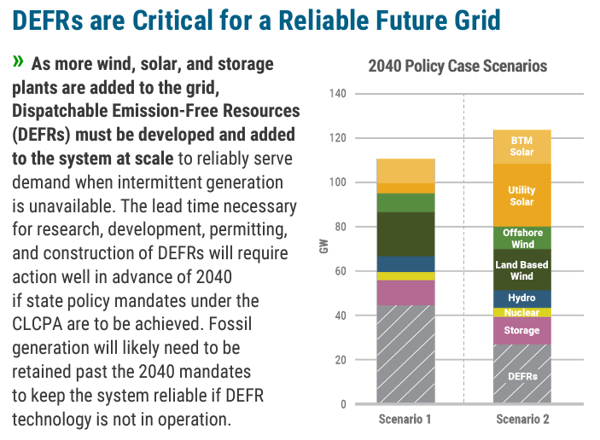
Figure 4: DEFRs in New York from NYISO
As in New England, this generation technology simply does not exist. In the words of the NYISO, “These resources represent a proxy technology that will meet the flexibility and emissions-free energy needs of the future system but are not yet mature technologies that are commercially available (some examples include hydrogen, renewable natural gas, and small modular nuclear reactors).” If the needed volume of intermittent solar and wind resources are installed, our strong advice is to not eliminate the needed carbon producing natural gas plants that can respond to changes in wind and solar output until a sufficient volume of DEFRs are in operation.
Conclusion
The clash between the goal of reducing carbon emissions from the energy sector and the need for reliable and affordable energy seems all but inevitable. For our clients, we continue to explore ways to reliably manage their energy supply through this difficult transition. Not surprisingly, we are very busy. Of course, please do not hesitate to contact me or other members of our team if you have questions about the content in this letter or other energy related matters.
Download the PDF version here.
[1] In a prior letter, we focused on the problems created by the duck curve in California – the rapid rise of solar generation when the sun comes up and the drop in solar generation when the sun goes down. While this problem is well documented and persists, we do not cover California in this letter.
[2] When the contracted renewable projects are added, several additional constraints appear, causing a 23% increase in congestion statewide by 2030. P.6 NYISO 2021-2040 Outlook.



